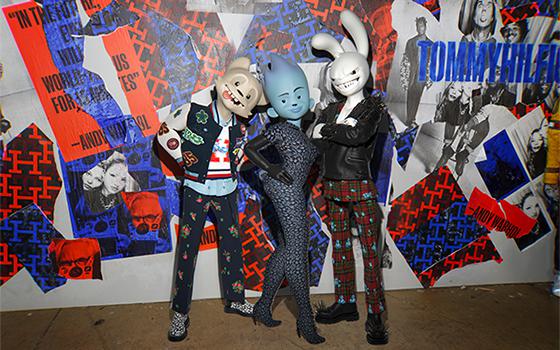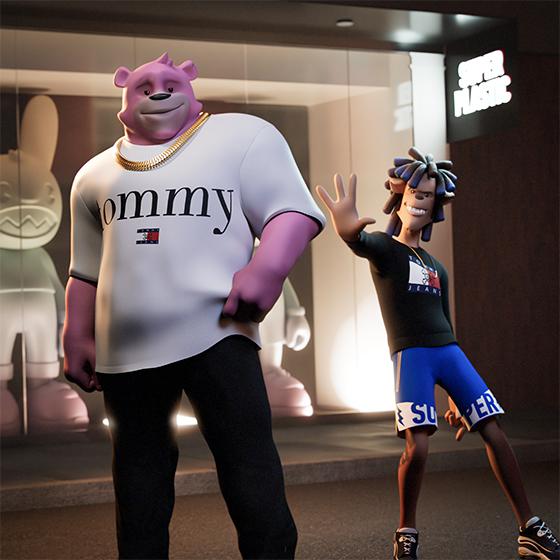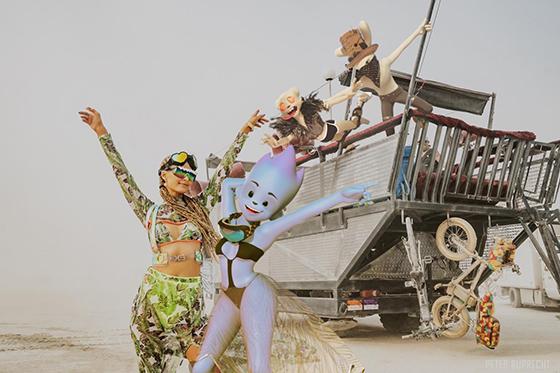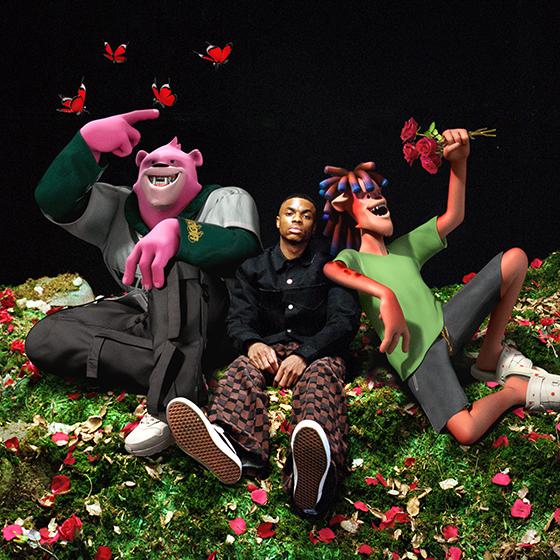
Most marketers chase the elusive concept of “authenticity” without an iota of irony, when most of us understand that if you are pursuing authenticity
odds are you just don’t’ have it to begin with. Meanwhile, the entertainment and toy company Superplastic embraces what they call “Synthetic Celebrity.” Its cartoonish stars
like Janky, Guggimon, and Daisy live mainly in social memes, as licensed entities, and as dazzlingly priced vinyl toys. The company has marketing partnerships
with Tommy Hilfiger and The Weekend. It even launched Superplastic Records this year as a music label for its synthetic Music Group Ghost Kids who are managed, by the way, by other Superplastic
synthetic celebrities. You can listen to the entire podcast at this link.
advertisement
advertisement
Superplastic CEO, Jennifer Van Dijk joined us this week to explain how this cartoon universe is not Mickey Mousing
around.
MediaPost: Thumbnail Superplastic for us. How are these toys and
these products and IP new and different?
Jennifer van Dijk: At its core,
Superplastic is a character universe. And the beauty of the characters is that they have the flexibility to operate both in virtual and digital worlds as well as in our real world, or however we
define it. Our characters start on social. They're born of the Internet, and very intentionally so, to kind of go around the gated media platforms to engage an audience, build an audience
and then come through the front door, really, with a crowd behind our characters and fans.

MP: What's the actual media
then, in which they're invented? I'm seeing a lot of short social memes, an occasional music video. I don’t see longer, deeper form animation that I might be familiar with from
previous licensing attempts. It seems as if they're developing character mainly through short takes.
Van Dijk: Absolutely. Our medium is really focused on TikTok, YouTube shorts, Instagram short form. I think a two-to-three-minute music
video might be our max so far. And that's really to create the sense of the characters, the physicality, the attitudes, the styles upon which then we can continue to iterate and grow through longer
form content, as we also build the fan base and understand what fans want. How do people see these characters? What do they think of them in terms of their brand partnerships? We kind of in a weird
way, co-create.

Smith: These characters are also very tangible, and part of the IP is that they are very highly priced
toys. Explain to me what you charge for these things and why and the community of collectors that's come up around them.
Van Dijk: Well, you hit on exactly the right word, which is the collector. Paul Budnitz is the original founder of Superplastic. He
was the founder of Kidrobot, had a lot of success in the toy business and the toy side. When he created Superplastic, he kept that ethos really as a way to engage with fans. I mean, when you're a fan
of something you want to own a piece of it, or you want to collect around it. And Paul knew that and hit on that very early on, but with the growth and flexibility of characters as living, breathing
IP across digital media. We range from very high-end art toys that are usually collabs with famous street artists or musical artists. We did one with The Weekend this past fall that was very
successful all the way through to other series of toys. We have different sizes. Now those two audiences don't always cross over, by the way. Our digital footprint on TikTok and social, and our
collector audience - those can be two different fans, but they all live within our universe.

MP: When you're generating characters like these, what's the media and brand building strategy? Where do you start developing an audience
to interact with and then extend into other media?
Van Dijk: It really does
start in the digital world, and in the world of social media in particular, to date very heavily in TikTok and Instagram and YouTube. And if you spend time on any of those platforms, you very quickly
start to see that there is an incredible world of immediate feedback and whether that's good or bad in terms of what people respond to. As you know, animation is not the easiest or the fastest thing
to produce. We have developed quite a powerful back end that allows us to make short form quality content quickly, which allows us to get the story out faster and really engage with fans quickly. And
this started with Janky and Guggimon. And now they have the ability to introduce their other friends, so that this character universe expands largely through their “relationships” with
others. But our vision long term is really to create characters that occupy unique spaces within a universe. If you take Daisy, for example, and really a gaming and tech fan base, Ghost Kids is much
deeper into not just music, singing and rapping, but into the music lifestyle segment and podcasts or things like that. You start to build out that universe. It really is a digital first for
us.

MP: So how does it work? Does it start with paid media that then gets a toehold, and then moves over
into these characters having their own channel with followers? Are you using outside social influencers? How do you actually build an audience like this for original IP in a channel like
TikTok?
Van Dijk: It really does start with kind of core cool content, and a
fun premise, to begin with. We are not your traditional marketer, in the sense, our goal is actually to provoke a response or to provoke culture in things. We start with that idea in our content. Then
we partner with the right people and other brands to really help us leverage that. And sometimes those other brands are actual celebrities. In the case of The Weekend, for example, or others that
we've done along that line. Some are brands that are very endemic to the areas that we're talking to. Tommy Hilfiger was really around a relationship around celebrating the 50 years of hip-hop by
launching a brand-new hip-hop act and the Ghost Kids. And sure, paid is a piece of it, but it's a piece of it only in the sense that it actually amplifies what is the core of the expression that we
want to get out there.

MP: Let’s discuss the partnerships. Is it fair to call this
licensing or are you doing something really different here? These seem to be much more embedded partnerships which raise a whole host of questions about who gets what from whom, and what's it worth to
you.
Van Dijk: Yeah, it is much more than just a typical licensing deal, although
that is a component of it typically. And remember, I come from a sports business background. And so, I grew up really in sponsorship and partnerships that are native to leveraging all sorts of
different types of experiences and mediums to build brand value and build fans. And that's really where we lean. If you take, for example, our partnership with Mercedes this past year, that
partnership really started around creating a new character together.
They had some history with a character called the Dackel, and we
created with them Superdackel, which is sort of a dog character that is very much of Mercedes and their history, but also blends nicely into our world of Janky and Guggimon, especially Guggimon, who
has that sort of worldly, sophisticated, very on brand with Mercedes, but also very targeted and cool at a younger audience. In many ways that relationship started because there was a perfect fit
between our brands and our character identities. Then it got expanded through the creation of that new character in our world which was then brought to life through real life, physical events,
content, and animation that we put out together, as well as footholds into NFTs a little bit, and apparel, merch, and toys.

MP: Well, that then raises the question of how do you contain this and keep on a strategy? Let's play this out few years. Yes, it could go
anywhere, but that's not always the most sensible business plan, because you need to have some sort of control and structure over this. Where do you envision this in two to five years from now? We're
familiar with how Disney or how Warner Brothers did this. And I'm curious how this compares to those older models?
Van Dijk: It's fantastic. Actually, one of the slides we use is the original IP map that Walt Disney drew, And we say, okay this is how
they did it in the 20th century, but we have a few things going for us in our century that can help us supercharge this. And really, my whole job is to focus and say, how does this grow strategically
over the next couple of years to really become this hyper valuable character universe that is our North Star. And the answer to it is, we're digging in and really doubling down in AI and Tech enabled
animation pipeline creation. At the core of it, the way that we can express our characters and tell our stories to the most fans is by creating a lot of content and a lot of really good content. And
of course, AI isn't there yet, maybe for some 2D stuff we've seen some really cool things. But we really believe that our unique IP plus technology can create something new that we've never seen
before in animation. So that's part of how we build this universe faster and bigger.
But then the other piece of it is, how do we really
understand our fan base? And this is where I take a lot of learnings from sports. A lot of entertainment companies don't know who watches their stuff, who engages with their things. They know they
have fans. But for us we actually can know who buys our toys, who buys our apparel, who engages with us on social, comments, shares those types of things. And we can actually build more customer
centric data insights than most other companies can, I think. And that's where we're taking a lot of pages from the sports world right now, and especially how teams are identifying fans. And then we
can bring those two things together. Put our attitude and spin on it. And maybe we could have a new, very alt version of Disney for the next century.